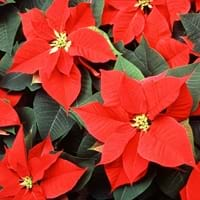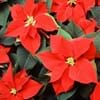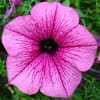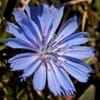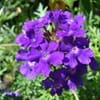Life Span
Perennial
Perennial
Origin
Mexico
Europe, Eastern Europe, Northern Europe, Southern Europe, Western Europe, United Kingdom, Russia/Siberia, Mediterranean, Turkey, Northern Africa, Central Asia, Eastern Asia, Western Asia, India, Nepal, China, Japan, Korea
Types
Prestige Red Poinsettiea, Snowcap White Poinsettia, Sparkling Punch Poinsettia, Enduring Pink Poinsttia
Bigleaf hydrangea, Hortensia, Smooth hydrangea, Oakleaf hydrangea, Annabelle
Habitat
Forest edges, Tropical regions
Forest edges, Hillside, Woods
USDA Hardiness Zone
9-15
5-9
Sunset Zone
H1, H2, 13, 16, 17, 18, 19, 20, 21, 22, 23, 24
Not Available
Habit
Upright/Erect
Weeping
Flower Color
Yellow, Red, Light Pink, Coral
Yellow green
Flower Color Modifier
Multi-Color
Not Available
Fruit Color
Not Available
Not Available
Leaf Color in Spring
Green, Dark Green
Light Green, Yellow green
Leaf Color in Summer
Dark Green
Green, Yellow green
Leaf Color in Fall
Dark Green
Green, Yellow green
Leaf Color in Winter
Green, Dark Green
Olive, Yellow green
Leaf Shape
Bracts
Oblovate
Plant Season
Fall, Winter
Spring, Summer, Fall, Winter
Sunlight
Full Sun, Partial Sun
Full Sun, Partial Sun
Type of Soil
Loam, Sand
Not Available
The pH of Soil
Acidic, Neutral
Not Available
Soil Drainage
Well drained
Not Available
Bloom Time
Late Fall, Early Winter, Winter
Early Spring, Spring, Late Winter
Tolerances
Drought
Not Available
Where to Plant?
Container, Ground, Pot
Container, Ground
How to Plant?
Seedlings
Seedlings, Stem Planting
Plant Maintenance
Medium
Medium
Watering Requirements
Keep the ground moist but not water-logged, Requires regular watering, Requires watering in the growing season
Not Available
In Summer
Lots of watering
Average Water
In Spring
Moderate
Moderate
In Winter
Average Water
Average Water
Soil pH
Acidic, Neutral
Not Available
Soil Type
Loam, Sand
Not Available
Soil Drainage Capacity
Well drained
Not Available
Sun Exposure
Full Sun, Partial Sun
Full Sun, Partial Sun
Pruning
Do not prune during shooting season, Prune after flowering, Prune lower leaves, Prune to control growth, Requires little pruning
Remove damaged leaves, Remove dead branches, Remove dead leaves
Fertilizers
All-Purpose Liquid Fertilizer
All-Purpose Liquid Fertilizer
Pests and Diseases
Bacterial Stem Rot, Botrytis Blight, Canker, Powdery mildew, Pythium rot, Rhizoctonia Root Rot
Red blotch
Plant Tolerance
Drought
Not Available
Flowers
Yes
Insignificant
Flower Petal Number
Single
Single
Foliage Texture
Coarse
Medium
Foliage Sheen
Matte
Matte
Attracts
Not Available
Birds
Allergy
Eye irritation, Mouth itching, Skin rash, Stomach burn, Throat itching
Chest tightness, Diarrhea, Dizziness, Nausea, Vomiting
Aesthetic Uses
Beautification, Bouquets, Showy Purposes
Not Available
Beauty Benefits
Not Available
Not Available
Edible Uses
No
Not Available
Environmental Uses
Air purification
Air purification
Medicinal Uses
Fever, Pain killer, Tooth ache
Fever, Kidney problems, Urinary tract problems
Part of Plant Used
Flowers, Leaves
Flowers, Root
Other Uses
Economic Purpose, Showy Purposes, Used as Ornamental plant
Not Available
Used As Indoor Plant
Yes
Not Available
Used As Outdoor Plant
Yes
Yes
Garden Design
Container, Feature Plant, Houseplant, Mixed Border, Tropical
Not Available
Botanical Name
EUPHORBIA pulcherrima '490 Jingle Bells'
VISCUM album
Common Name
Poinsettia
European Mistletoe
In Hindi
Poinsettia
Hydrangea
In German
Poinsettia
Hortensie
In French
Poinsettia
Hortensia
In Spanish
Poinsettia
Hortensia
In Greek
Αλεξανδρινό
υδραγεία
In Portuguese
Poinsétia
Hortênsia
In Polish
Poinsecja
Hortensja
In Latin
Poinsettia
Hibiscus
Phylum
Anthophyta
Not Available
Class
Eudicotyledones
Not Available
Order
Malpighiales
Not Available
Family
Euphorbiaceae
Viscaceae
Genus
Euphorbia
Not Available
Clade
Angiosperms, Eudicots, Rosids
Not Available
Tribe
Not Available
Not Available
Subfamily
Not Available
Not Available
Number of Species
Not Available
Properties of Poinsettia and European Mistletoe
Wondering what are the properties of Poinsettia and European Mistletoe? We provide you with everything About Poinsettia and European Mistletoe. Poinsettia doesn't have thorns and European Mistletoe doesn't have thorns. Also Poinsettia does not have fragrant flowers. Poinsettia has allergic reactions like Eye irritation, Mouth itching, Skin rash, Stomach burn and Throat itching and European Mistletoe has allergic reactions like Eye irritation, Mouth itching, Skin rash, Stomach burn and Throat itching. Compare all the properties and characteristics of these two plants. Find out which of these plant can be used as indoor plant. If you are interested to decorate your house and garden, find out aesthetic uses, compare them and select the plant which will beautify your surrounding. Along with beautification, try comparing medicinal and edible uses of Poinsettia and European Mistletoe and you can choose the plant having best and most benefits.
Season and Care of Poinsettia and European Mistletoe
Season and care of Poinsettia and European Mistletoe is important to know. While considering everything about Poinsettia and European Mistletoe Care, growing season is an essential factor. Poinsettia season is Fall and Winter and European Mistletoe season is Fall and Winter. The type of soil for Poinsettia is Loam, Sand and for European Mistletoe is Not Available while the PH of soil for Poinsettia is Acidic, Neutral and for European Mistletoe is Not Available.
Poinsettia and European Mistletoe Physical Information
Poinsettia and European Mistletoe physical information is very important for comparison. Poinsettia height is 35.60 cm and width 45.70 cm whereas European Mistletoe height is 60.00 cm and width 60.00 cm. The color specification of Poinsettia and European Mistletoe are as follows:
Poinsettia flower color: Yellow, Red, Light Pink and Coral
Poinsettia leaf color: Green and Dark Green
European Mistletoe flower color: Yellow green
- European Mistletoe leaf color: Light Green and Yellow green
Care of Poinsettia and European Mistletoe
Care of Poinsettia and European Mistletoe include pruning, fertilizers, watering etc. Poinsettia pruning is done Do not prune during shooting season, Prune after flowering, Prune lower leaves, Prune to control growth and Requires little pruning and European Mistletoe pruning is done Remove damaged leaves, Remove dead branches and Remove dead leaves. In summer Poinsettia needs Lots of watering and in winter, it needs Average Water. Whereas, in summer European Mistletoe needs Average Water and in winter, it needs Average Water.
